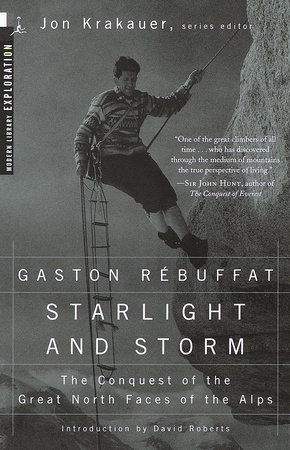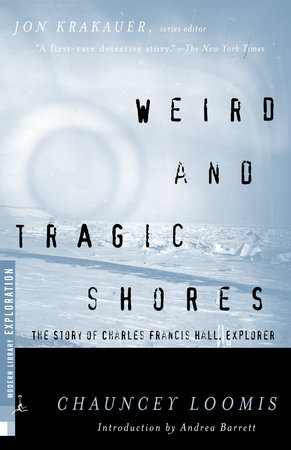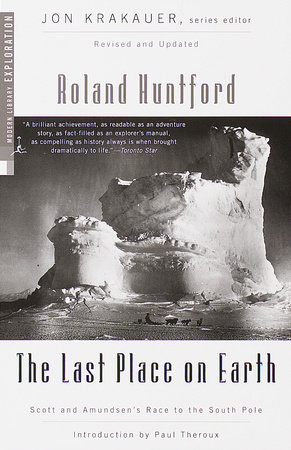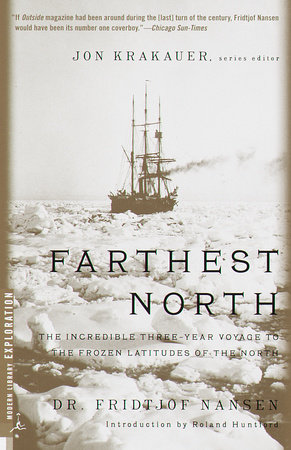Excerpt
Starlight and Storm
Introduction
David Roberts
During the late 1940s and early 1950s, Gaston Rébuffat was one of the half-dozen best mountain climbers in the world. He could count among his peers only such men as the visionary Italian soloist Walter Bonatti; the fanatically driven Austrian Hermann Buhl (with whom, after a chance meeting on the Eiger, he would spearhead the grim survival epic chronicled in this book); and his fellow Chamonix guides, the powerhouse Lionel Terray and the mercurial acrobat Louis Lachenal. (At the time, no American or British climber was even in Rébuffat's league.)
On Annapurna in 1950, Rébuffat and Terray, forgoing any summit hopes of their own, saved the lives of Lachenal and Maurice Herzog after that pair had staggered down from the top in a storm, exhausted and frostbitten. The triumph--the first ascent of any eight-thousand-meter peak--took a terrible toll, as Lachenal lost all his toes; Herzog, all his fingers and toes.
In 1954, as the thirty-two-year-old Rébuffat set out to write the book that would become Starlight and Storm, he was still bound by a contract the team had signed at the airport on their departure for Nepal. Sprung on the unsuspecting members, that contract forbade them to publish anything about the expedition for five years after its completion. The only account of the grand French adventure in the Himalayas would be that of its leader, Herzog. Annapurna, the now-canonic tale of perseverance, self-sacrifice, and heroism, would become the best-selling mountaineering book of all time.
By 1950, however, Rébuffat had serious ambitions to be a writer. He had already published a manual for beginning climbers and a photo book about the Calanques, the sea cliffs of his boyhood. As he read the interdicting contract, he was so shocked and dismayed that he came close to walking out of the airport and abandoning the expedition. At last he signed, but for the rest of his life, he nursed a bitter grievance about Herzog's preemptive strike.
It is in part for this reason that Starlight and Storm mentions Annapurna in only six glancing sentences. Forbidden to write about the expedition, Rébuffat turned to the climbs on which, in the long run, his lasting reputation would rest. During the 1930s, six great walls scattered across the Alps, all facing north, gained the cachet of ultimate challenges. They ranged from the appallingly steep, such as the Cima Grande di Lavaredo in the Italian Dolomites (overhanging in its first 720 feet, vertical thereafter), to the appallingly dangerous, such as the Eiger in Switzerland, where eight of the first ten men to attempt the face met their deaths.
By the time Rébuffat became a first-rate climber, in the early 1940s, all six faces had been climbed, but none had seen more than a handful of ascents. The winning of these precipices had made legends of their pioneers: the redoubtable Italian Ricardo Cassin (the only man to lead the first ascents of two of the six faces); the German Andreas Heckmair, "motor" of the extraordinary Eiger climb; and Pierre Allain, the greatest French alpinist of his day.
What was left for Rébuffat's generation, now that these ultimate walls had succumbed? Without making any particular fuss--today, his counterpart would no doubt come decked out with commercial sponsorships and hovered over by a media horde--Rébuffat set himself the goal of climbing all six of the great north faces of the Alps. When he reached the top of the Eiger, on July 29, 1952, Rébuffat accomplished this stirring feat of virtuosity. It is a measure of the man's modesty that nowhere in Starlight and Storm does he bother to mention that he was the first man ever to seize the laurels from all six of those perilous walls.
Confident though he was as a climber, at thirty-two Rébuffat was by no means sure he had what it took to be a "real" writer. Though he had grown up in Marseilles, he had been obsessed with mountains since boyhood. So brilliant were the alpine campaigns of his youth that in 1942 he was elected to the company of guides of Chamonix--an almost unheard-of honor for a climber not born in Chamonix. (Terray, from Grenoble, and Lachenal, of Annecy, were two other notable exceptions.) For two decades, the tall, craggy montagnard made his living as a guide. To supplement their meager earnings, Rébuffat and Terray conducted a ludicrous experiment in running a farm in Les Houches, just down the valley from Chamonix. (Since childhood, Gaston had had a mortal fear of cows. With both proprietors always off in the mountains, the farm did not last long.)
Starlight and Storm is an odd crossbreed of a book. One wonders whether Arthaud, the original publisher, asked Rébuffat to beef up what they might have regarded as a dangerously slender account of six adventures in the mountains with a capsule how-to manual to give the work utilitarian value and shelf life.
Uncertain though he was in taking up the pen, the Chamonix guide found his voice at once, for he knew what he wanted to say about climbing and the mountain life. It is here that Rébuffat's utter originality comes to the fore. Ever since mountaineering had been "invented," with the first ascent of Mont Blanc in 1786, the struggle of men against the heights had been conceived of and narrated in martial terms. A team "laid siege" to a mountain; it "attacked" its objective by the likely "weaknesses" in its "defenses"; reaching the summit was inevitably a "victory," even a "conquest."
All this chest thumping was anathema to Rébuffat. From an early age, he had gained his remarkable proficiency on slab and serac not by battling against the natural world but by embracing it. The mountain was not an enemy; it was an enchanted realm of peace and harmony, entered into in a spirit of communion, not of war.
In the lyrical hymn to that communion which poured out in the pages of Starlight and Storm, Rébuffat single-handedly revolutionized mountain writing. So thoroughly did this new aesthetic win the day, imbuing the next generation of climber-writers, that today's reader, picking up Starlight and Storm for the first time, can scarcely sense how radical this sort of writing seemed in 1954.
Indeed, at times Rébuffat's exaltations threaten to eclipse the real tragedies and do-or-die struggles he endured. One must read between the lines to sense the horror of his party's bivouac on the descent of the Grandes Jorasses after Rébuffat's companion Georges Michel has been swept 1,500 feet to his death by a falling boulder--not to mention the astounding skill by which Rébuffat himself avoided the same death by instinctively jamming his plunging body into a perfect chimney position thirty feet below the ledge, at the cost of a broken foot, kneecap, and rib.
After 1953, Rébuffat continued to guide, often taking clients up lines otherwise considered too stiff for amateurs. But he receded from the cutting edge of first ascents and new routes. Instead, in collaboration with several gifted photographers, he produced a series of exquisite picture books that mingled personal reflection with historical evocation of the alpine playground. These books--Neige et Roc, Entre Terre et Ciel, Mont-Blanc: Jardin Féerique, and others--gained a large audience and made Rébuffat mildly famous.
In the photos illustrating those books, Rébuffat appeared again and again in profile against a vertical cliff, always wearing the same patterned pullover sweater, the rope dangling from his waist into the void, hands seeming to caress the rock, toes perched on invisible holds. These images captured as none had before the grace and elegance that lay at the heart of Rébuffat's approach to climbing.
So persuasive was the Rébuffat aesthetic that it inspired a counterreaction among the blue-collar Brits who began to make their own mark on mountaineering in the 1960s. "Ghastly Rubberfat," they wickedly nicknamed their French rival, and their quarrel with Rébuffat's cult of grace and technique found voice in a delightful essay, called "Apes or Ballerinas?" by the Scottish ice climber and satirist Tom Patey. Patey argued, only partly tongue in cheek, that getting up a climb depended on the thrashing primate emerging from beneath the veneer of the stylish gymnast that Rébuffat so photogenically personified.
One day in 1959, in a bookstore in Boulder, I held in my hands a small volume, recently published by E. P. Dutton & Co., called
Starlight and Storm. At sixteen, starting to fall under the spell of the Colorado mountains, I had read Annapurna and learned of Rébuffat's key role in that bold and costly ascent. But of these six great north faces in the Alps, I knew nothing. The photos spoke to me of some world of mountain exploit far more daunting than what could be found on the talus piles of my beloved Rockies. I hesitated in the face of the book's $5.50 price tag. For that much money, I could buy three karabiners!
Along with
Annapurna and Lionel Terray's
Conquistadors of the Useless (published in English a few years later),
Starlight and Storm became for me a sacred text. It was these three books, as much as the outings I performed with my chums, that turned me from a hiker into a serious mountaineer. Still without any inkling that I might ever climb a big wall myself, I thrilled through each rereading of the harrowing bivouacs, the gutsy leads up frozen pitches, that Rébuffat so poetically recounted.
At the age of twenty, by now a junior instructor at Colorado Outward Bound School, I was asked to give a dawn inspirational reading to the mob of ninety-six students it was our job to toughen up in the Elk Range. With trembling voice but the passion of an acolyte, I read the passage in
Starlight and Storm called "The Brotherhood of the Rope."
Rereading Rébuffat's prose more than three decades later, I am struck anew by the originality of his writing. Perhaps in 1959 it was the how-to treatise called "The Beginning Climber" that made me dig deep into my pockets and buy
Starlight and Storm, for I was still too green to know that you couldn't learn to climb from a book.
In reprinting Rébuffat in 1999, one is tempted to omit these now thoroughly outdated instructional pages, which Rébuffat adjoined so chimerically to his six splendid stories. Yet I find the very obsolescence of his advice beguiling. To think, that as late as 1954, echoing the wisdom of his day, Rébuffat still recommended the frequent use of the shoulder stand and the Tyrolean traverse or, in teaching the rappel, told us to "double the rope and hang it over a projecting rock"!
What is more, sprinkled through the blunt and pragmatic injunctions of "The Beginning Climber" are all kinds of philosophical nuggets (to Rébuffat, climbing could never be reduced to mere rules). "Reading a map is a thrilling pastime," he insists. "Of course, technique is a poor thing, even a wretched thing, when separated from the heart which has guided it: this is true in rock climbing, or playing a piano, or building a cathedral."
Over the years, I am sorry to say, I had begun to take Rébuffat for granted. His Saint-Exupéry approach to mountaineering was only one vein. In the late 1960s, caught up in the raucous, antiestablishment antics of my own gang of climbing cronies, I sympathized with Tom Patey's witty put-down of Rébuffat rather than with the mystic enthusiasms that had so inspired me at sixteen.
During the last two years, however, as I have conducted research for a book about what really happened on Annapurna in 1950, I have discovered a new and far more complex Gaston Rébuffat than the one that had been lodged in my head. With the posthumous publication of his letters to his wife, Françoise, in 1996, the full measure of Rébuffat's disenchantment on Annapurna came to light. Above all, he was disgusted from the start with the fog of French chauvinism that surrounded the expedition--to which Herzog would unblushingly appeal in Annapurna. Louis Lachenal, equally disenchanted, was likewise silenced by the contract he had signed interdicting publication for five years.
Both men had been mortified by a ceremony in Paris prior to departure during which the team members were commanded to swear an oath of unquestioning obedience to Herzog. At that meeting, Lucien Devies, the most powerful man in French mountaineering and a Gaullist as staunch as Herzog, delivered a pep talk invoking French glory and military efficiency. Under his breath, afterward, Lachenal muttered, "On our knees we will go," and Rébuffat, picking up the sardonic thread, echoed, "With joy in our hearts!" In his notebook, Rébuffat characterized the session: "Depersonalization . . . a certain Nazification."
Through the rest of his life, Rébuffat longed to publish his own commentary on Annapurna; but Françoise, conscious of the fact that the 1950 ascent had woven itself so deeply into France's myth of itself that her husband's views might be greeted as the darkest apostasy, counseled him to keep his silence. When Herzog, in the early 1980s, published an even more self-serving version of the climb in a book called Les Grandes Aventures de l'Himalaya, Rébuffat scribbled his bitter rejoinders in the margins of his copy, and made further notes toward the commentary he would never publish.
Yet when these glimmerings surfaced in the last few years, more than a decade after Rébuffat's death, far from revealing the guide as a traitor to the sacred myth of Annapurna, they were widely hailed as a long overdue debunking of that myth, stated with terse eloquence. Rébuffat saw Herzog, even on the summit, as consciously orchestrating the heroic role he would play the rest of his life. There, atop the highest mountain yet climbed in the world, Herzog had insisted on Lachenal's photographing himself holding aloft the French tricolor, the flag of the French Alpine Club, and even the flag of the tire company for which he worked, Kléber Colombes. Yet moments later he foolishly dropped his gloves, which rolled into the void--an error that would cost Herzog his fingers.
"Ah, if only Herzog had lost his flags instead of his gloves, how happy I would have been!" wrote Rébuffat in his private notes. And, conjuring up the summit moment: "After the sequence of the flags, this jingoistic and supremely pragmatic moment, Maurice organized his ecstasy. Losing, if not his reason, at least his sense of reality, he began complacently to soar, plunged into a kind of happiness, a beatitude of the moment when a sense of the real ought to have been primordial." Only the cannier Lachenal sensed the absolute need to get down at once, and it can be argued that he lost his toes because he refused to abandon Herzog, whose tranced-out obliviousness would almost certainly otherwise have meant his death.
To read only the Rébuffat of his published works is to imagine a gentle poet of the mountains, a philosopher of harmony and rapture. The other Rébuffat, who has emerged in the posthumous letters and notes--the unblinking critic of all that was hypocritical, nationalistic, and egomaniacal in mountaineering--was there all along. His closest friends knew this; they knew, for example, how on the Eiger, Rébuffat was driven to a fury by Hermann Buhl's pigheaded refusal to share the lead, even when Buhl's lapses of judgment might have cost the lives of any number of the nine climbers trapped together in their desperate fight for the summit.
Last April I met Françoise in Paris, where she lives. Though remarried, she fiercely guards her first husband's legacy. Rébuffat was diagnosed with breast cancer in 1975. In the decade it took him to die, he spiraled downward in an agonizing sequence of small losses and setbacks. Though mortally stricken, Gaston made one last hard climb, on the Aiguille du Midi in 1983.
Two years before he died, fulfilling a lifelong dream, Rébuffat rafted the Colorado River with Françoise, signing up for a commercial trip. "He was very tired, just out of chemotherapy," she told me. "There were clients of all ages on the river. They quickly saw that Gaston was very sick. Very discreetly, the other clients started to do everything for him. To get in and out of the boat, he needed help. Two young Germans found the best campsites for him."
Did these companions realize who Rébuffat was? I questioned. Did they know what this man had done in the mountains in his prime?
"No," said Françoise. "All they knew was that he was French and that he was very sick."
In light of all I have learned about Annapurna in the last two years and having talked to his widow and his surviving friends, I have gained a new admiration for Gaston Rébuffat. He becomes in my eyes a very different man from the lyric climber who enthralled me at sixteen. Yet he emerges, I think, as a hero of even greater stature than the first man to climb the six great north faces--a hero for the twenty-first century, not the mid-twentieth.
In this timely republication of
Starlight and Storm, a whole new generation of readers has the happy chance to discover a blithe, ageless book that stands as one of the finest testaments to the exploratory spirit ever written.
David Roberts writes often about mountain climbing, exploration, and archaeology. His book about what happened on Annapurna in 1950 will be published by Simon & Schuster next year.










